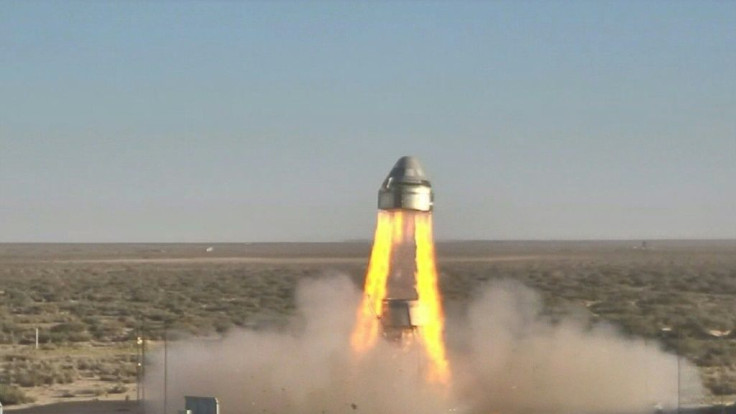Space Program News: Boeing Starliner Mission Scrubbed, Spacecraft Fails To Achieve Proper Orbit

KEY POINTS
- Software is blamed for putting the Boeing Starliner in the wrong position for docking with the International Space Station
- The Atlas 5 rocket performed flawlessly on liftoff
- The Starliner is expected to return to Earth Sunday
NASA canceled the planned docking of Boeing’s Starliner capsule with the International Space Station because of a software problem, dealing a significant setback Friday to plans to restore U.S. space flight.
The Starliner is expected to land in the New Mexico desert Sunday.
We have a projected return to White Sands in 48 hours. If we can stay longer and get more test objectives, we will do that.
— Boeing Space (@BoeingSpace) December 20, 2019
- Boeing VP of Space and Launch Jim Chilton
Boeing, which still is reeling from its decision to suspend production of the 737 MAX pending recertification from the Federal Aviation Administration following two fatal crashes that killed 346 people, said it would scrub the mission because the Starliner was out of position. The capsule, however, was in a safe orbit.
The orbit we're in today - we chose it because it allows us to return to White Sands in 48 hours.
— Boeing Space (@BoeingSpace) December 20, 2019
- Boeing VP of Space and Launch Jim Chilton
BoeingSpace astronaut Christopher Ferguson said the Atlas 5 rocket used to launch the Starliner “worked perfectly.”
At a news conference, officials said a software problem likely caused the autonomously commanded spacecraft to miscalculate its position. The result was the thrusters firing at the wrong time, leaving it in the wrong position and without enough propellant to complete its mission and return to Earth.
“It’s not worth doing at this point given the amount of fuel we burned,” Jim Bridenstine, the NASA administrator, told the news conference.
“Starliner believed it was in an orbital insertion burn... the spacecraft burned more fuel than anticipated to maintain precise control,” Bridenstine said.
The capsule had been expected to dock with the space station Saturday.
Boeing said if astronauts had been on board, they would not be in any danger. The test, however, was considered critical to plans to regain the ability to use U.S. spacecraft to ferry astronauts. Since the space shuttle was retired in 2011, the U.S. has relied on Russia for transportation.
Though no humans were aboard, a mannequin nicknamed “Rosie” fitted with sensors to measure forces future astronauts will feel, occupied one of the seats.
The liftoff at 6:30 a.m. Friday from the Kennedy Space Center in Florida was described as flawless and a milestone “in a new era of U.S. human spaceflight systems.”
The @BoeingSpace #Starliner atop a @ULALaunch #AtlasV rocket is seen as it launches from Space Launch Complex 41. More 📸coming soon! - https://t.co/CAbKaLuCIb pic.twitter.com/zkvKDbeBB4
— NASA HQ PHOTO (@nasahqphoto) December 20, 2019
In 2014, contracts worth nearly $7 billion were awarded to Boeing and SpaceX to build new spacecraft that could be put into service from U.S. soil, but the program is more than two years behind schedule. SpaceX has a test launch set for Jan. 11 to test an abort system, the same system aboard the Crew Dragon that caused an explosion that destroyed the reusable spacecraft last summer. A successful test then could lead to a manned mission before July.
Friday’s problem was the latest in a series of delays that have plagued efforts to restore U.S. space flight and it was unclear what impact it would have.
© Copyright IBTimes 2025. All rights reserved.




















